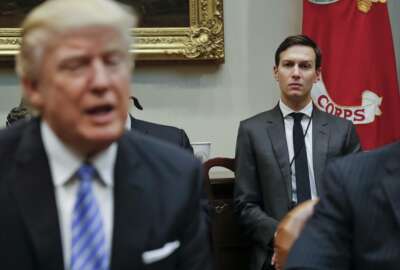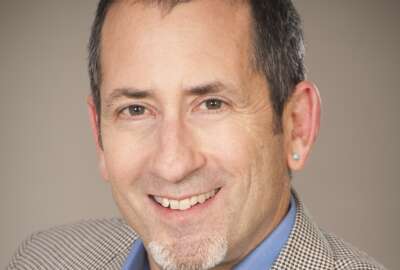
Trump’s new innovation office strikes a familiar chord
The Trump administration’s new Office of American Innovation wants to bring in private-sector experts to improve federal agency performance. It should heed the...
When President Donald Trump announced the new Office of American Innovation a few weeks back, the first thought that came to mind was about how this sounded similar to an Obama administration initiative called the President’s Management Advisory Board.
The goal of both organizations is the same: Bring in private-sector experts to help the government improve its back-office and mission-critical processes.
So was this just a case of the Trump folks putting a new name on an existing idea, as is the custom when a new administration comes in? Or was there something more here that would set this apart?
It’s hard to tell based on the short memo. The only inkling of what OAI will do comes from Section 2 of the memo:
“The OAI will make recommendations to the president on policies and plans that improve government operations and services, improve the quality of life for Americans now and in the future, and spur job creation.”
The president offered a few more details on April 11, when he and some Cabinet members met with more than two dozen business leaders, including Jim McNerney, former chairman, president and CEO of Boeing; Mary Barra, chairman and CEO of General Motors; Ginni Rometty, chairman, president and CEO of IBM; and Rich Lesser, CEO of Boston Consulting Group.
Trump told the CEOs: “With your help and insights we’ll use the private-sector innovation to drive job creation and reform government. We have computer systems in this country that are 40-years old. So when you hear we’re hacked … we’re like easy targets. One of the things we’re doing, we’re working with a very, very wonderful woman from IBM.”
He added that his administration will have a “massive program” to modernize computer equipment. Trump said the cost of maintaining computers is “so high it’s not even a believable number.”
The CEOs divided into five groups and met with different secretaries to talk about trade, education, workforce development, energy and environment, regulatory reform and infrastructure.
That detail sure makes it sound like what the Obama administration started in 2010 with the PMAB.
The PMAB included a rotating set of industry executives from companies such as Symantec, the American Red Cross and Aetna.
“We worked to identify best practices in the private sector that could be applied to government. This work was informed by lots of outreach to the private sector, including bringing in Fortune 500 CEOs and technology leaders for a White House Forum on Modernizing Government in January 2010,” said a former Obama administration official, who requested anonymity to talk about the new White House office. “The President’s Management Advisory Board provided advice and recommendations on effective strategies for the implementation of the best business practices on government management and operations, with a focus on productivity, the implementation of innovative methods, customer service, and technology.”
The official, who was close to the inner workings of the board, said the PMAB helped the Office of Management and Budget and agencies better manage federal IT, leading to $4.7 billion in savings, as well as streamline purchasing by implementing strategic sourcing and category management principles, which led to a decrease of $20 billion in annual contract spending, and reduce the government’s real estate footprint by 25 million square feet.
But the PMAB had its challenges too. Just like OAI likely will find out, not every concept that works in the private sector will work in government.
Tony Scott, the former federal CIO, who spent most of his career in the private sector, said over his two-year tenure he found the PMAB’s advice thoughtful and useful.
But he said sometimes the lack of a real understanding of how government works by the private-sector folks led to some suggestions that just weren’t achievable.
“What you want is a group of diverse opinions in there to generate a set of things for your organization to grind on,” he said. “I think that’s why the new office could be interesting.”
He said there still isn’t enough information about the OAI to get a sense of their focus areas, but he would recommend the group serve as a central body for specific initiatives.
The former official also cautioned about the challenges of bringing in private sector practices without understanding the government’s culture. But that doesn’t mean opportunities don’t exist either.
“There are clearly areas where the private sector has made more progress, or identified faster or more efficient ways of doing business, than government agencies,” the official said. “I believe the PMAB, and efforts like the U.S. Digital Service, were important, impactful steps forward in improving government operations.
The official added the USDS and the General Services Administration’s 18F organization “took the best private and public-sector practices and helped scale them across agencies — saving millions of dollars and always with a focus on helping citizens.”
The hope is the Office of American Innovation doesn’t try to reinvent the wheel and takes a serious look at what the PMAB, USDS, 18F and others already have done to improve federal systems and services.
The private sector brings a lot to the table, but the profit motive and smaller organizations just don’t compare to the federal government. Jared Kushner, the assistant to the president and his son-in-law, is leading OAI and would be smart to bring in some former federal executives as well as some career employees to help bring some realism to the discussion.
Too often, as we saw with the PMAB, an idea like strategic sourcing may work for Symantec or Aetna, but the government is a totally different environment with political, social and culture concerns that most companies do not have.
Return to the Reporter’s Notebook
Copyright © 2025 Federal News Network. All rights reserved. This website is not intended for users located within the European Economic Area.
Jason Miller is executive editor of Federal News Network and directs news coverage on the people, policy and programs of the federal government.
Follow @jmillerWFED
Related Stories





